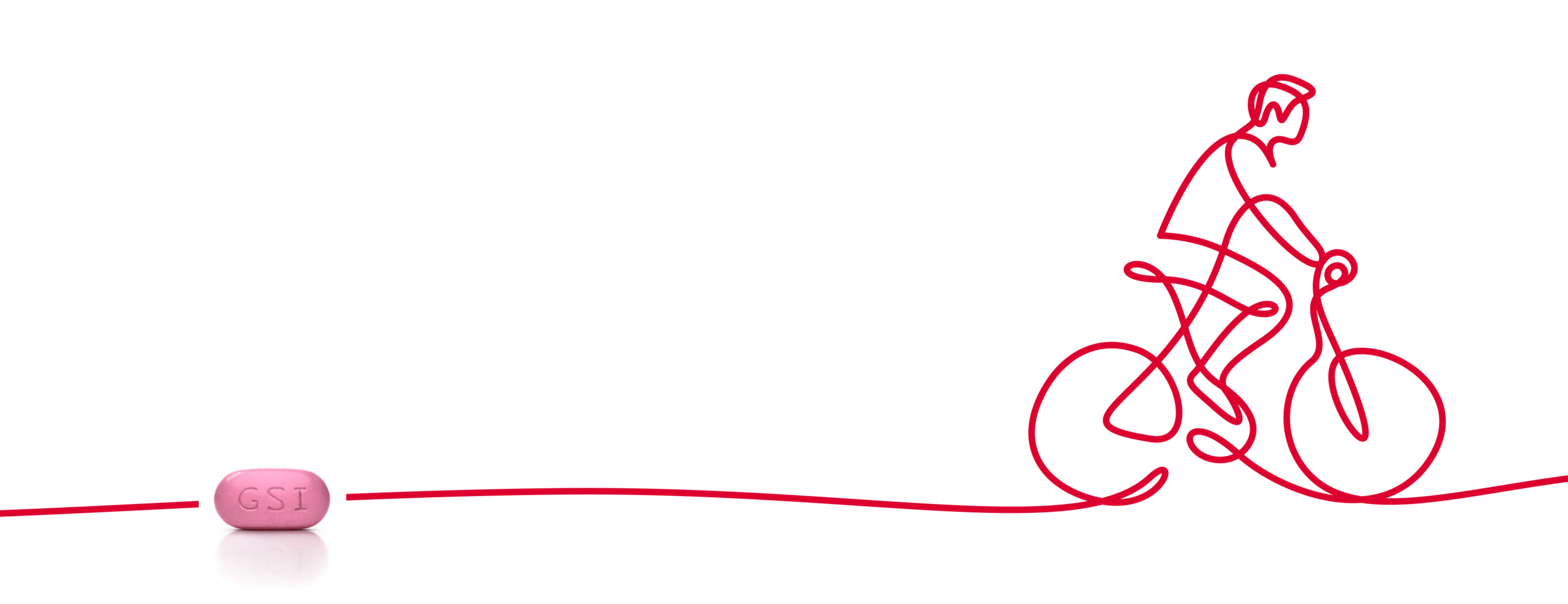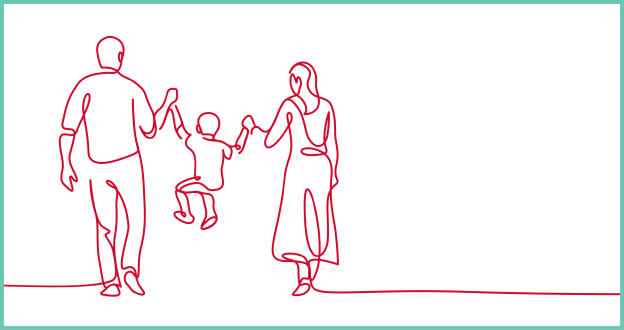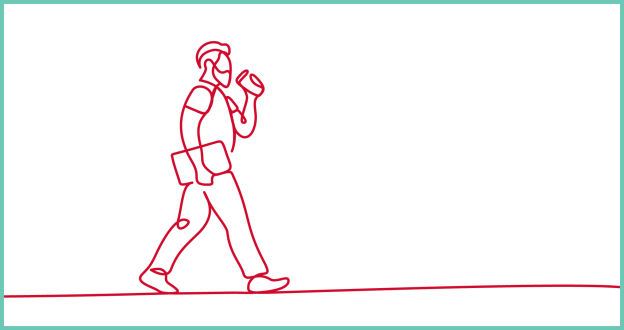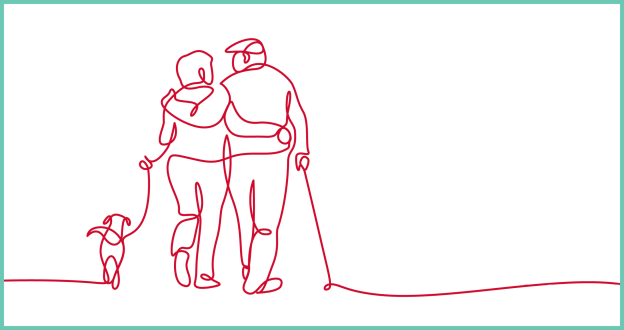Robust* and durable efficacy through 5 years in treatment naïve, and 2 years in virologically suppressed participants with 0 treatment-emergent resistance† in pivotal‡ trials.1–6
Focus on long-term health
Well-tolerated with 2% discontinuations due to AEs in pivotal‡ randomised clinical trials§1–8
Find out more
Footnotes:
*Robust: Defined as maintained efficacy, which is dependent on patient adherence. Adherence is impacted by tolerability and simplicity of treatment.9–12
†Efficacy: In RCTs in treatment-naïve participants, BIKTARVY® was non-inferior (VL<50 copies/mL) to ABC/3TC/DTG (Study 1489) and DTG + FTC/TAF (Study 1490) at Weeks 48 (primary endpoint), 96 and 144 (secondary endpoints).1,2 Pooled efficacy for BIKTARVY® (VL<50 copies/mL, n=634, M=F) at Weeks 48 and 144 was 91% and 82% respectively.1,2 After the optional 96 week open-label extension phase (from Weeks 144 through 240), participants taking BIKTARVY® since baseline achieved and maintained high rates of virologic suppression (VL<50 copies/mL: 99% [n=426/432] M=E, 67% [n=426/634] M=F).3 In RCTs in virologically-suppressed participants, BIKTARVY® was non-inferior (VL≥50 copies/mL, M=F) at the Week 48 primary endpoint to comparator regimens of ABC/3TC/DTG (Study 1844) and ATV- or DRV-based regimens (Study 1878).1,2 BIKTARVY® efficacy at Week 48 (VL<50 copies/mL, M=F) was 94% in Study 1844 (n=282) and 92% in Study 1878 (n=290).1,2 Participants who switched to BIKTARVY® at baseline or from Week 48 in an optional open-label extension (Study 1844 total exposed to BIKTARVY® n=547, Study 1878 n=534) maintained high levels of viral suppression (VL<50 copies/mL, M=E) through 96 weeks in Study 1844 (100%, n=283/283)4 and Study 1878 (100%, n=318/318).5 Resistance: In pivotal (registrational) Phase 3 RCTs, there was 0 treatment-emergent resistance to the components of BIKTARVY® in the final resistance analysis populations.1–6
‡Pivotal: Defined as the four registrational trials for BIKTARVY® (studies 1489, 1490, 1844 and 1878).
§Tolerability and discontinuation due to adverse events (AEs): In Studies 1489 and 1490 of treatment-naïve participants receiving BIKTARVY® through 144 weeks, the most frequently reported AEs were headache (5%), diarrhoea (5%) and nausea (4%).1,2 In these studies, discontinuation due to AEs was 1% at Week 48,1,2 1% at Week 144 (n=6/634)13 and 1.6% (n=10/634) at week 2403 for participants initially randomised to BIKTARVY®. Cumulative deaths were reported in 1,14,15 613 and 93 (1.4%) participants by weeks 48, 144 and 240.
In virologically suppressed participants at Week 48, 2% (6/282) discontinued BIKTARVY® due to AEs in Study 1844, and 1% (2/290) in Study 1878.7,8 Across both studies (1844 and 1878), <2% of the 1081 participants discontinued treatment with BIKTARVY® due to AEs through the open-label extension study phase.4,5 By week 48, death was reported in 2 (1%) and 1 (<1%) of participants in studies 18447 and 18788 respectively. One participant in the 1844 study died during OLE phase.4 Please refer to the Summary of Product Characteristics for the full list of AEs and product safety profile.
‖Small STR: With flexible once-daily dosing. Each BIKTARVY® 50 mg/200 mg/25 mg film-coated tablet is approximately 15 mm x 8mm.1–2 BIKTARVY® can be taken with or without food. BIKTARVY® should not be co-administered simultaneously with antacids, oral medications or supplements containing magnesium, aluminium or iron under fasted conditions. BIKTARVY® should be administered at least 2 hours before, or with food 2 hours after antacids, oral medications or supplements containing magnesium and/or aluminium. BIKTARVY® should be administered at least 2 hours before iron supplements, or taken together with food at any time. In pregnant patients, dosage adjustments are recommended for co-administration of polyvalent cation-containing antacids, oral medications or supplements (including calcium-containing oral medications or supplements). See SmPC for full information, including use during pregnancy.1–2
Abbreviations:
3TC, lamivudine; ABC, abacavir; AE, adverse event; ATV, atazanavir; DDI, drug-drug interaction; DRV, darunavir; DTG, dolutegravir; FTC, emtricitabine; M=E, missing=excluded; M=F, missing=failure; RCTs, randomised controlled trials; STR, single-tablet regimen; TAF, tenofovir alafenamide; VL, viral load.
References:
- BIKTARVY® Summary of Product Characteristics (The UK).
- BIKTARVY® Summary of Product Characteristics (IE).
- Sax P, et al. eClinicalMedicine. 2023; 59: 101991.
- Brar I, et al. Infectious Diseases (ID) Week 2020, 21–25 October. Poster 1028.
- Rockstroh JK, et al. HIV Glasgow 2020, 5–8 October; Glasgow, UK. Poster 036.
- Orkin C, et al. HIV Glasgow 2022, 23–28 October; Glasgow, UK. Poster P088.
- Molina JM, et al. Lancet HIV. 2018; 5(7): e357–e365.
- Daar ES et al. Lancet HIV. 2018; 5(7): e347–e356.
- US Department of Health and Human Sciences (DHHS). What to Start: Guidelines for the Use of Antiretroviral Agents in Adults and Adolescents Living with HIV, March 2023. Available at https://clinicalinfo.hiv.gov/sites/default/files/guidelines/documents/adult-adolescent-arv/guidelines-adult-adolescent-arv.pdf. Accessed February 2025.
- Cihlar T, et al. Curr Opin Virol. 2016; 18: 50–56.
- Trottier B, et al. J Int AIDS Soc. 2014; 17(Suppl 3): 19765.
- Orkin C, et al. HIV Med. 2018; 19: 18–32.
- Orkin C, et al. Lancet HIV. 2020; 7(6): e389–e400.
- Gallant J, et al. Lancet 2017;390:2063–2072.
- Sax PE, et al. Lancet 2017;390:2073–2082.
UK-BVY-0703 Date of preparation February 2025





